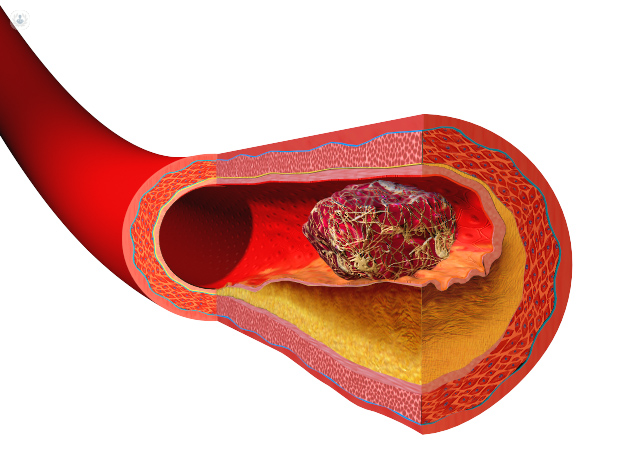Thrombosis and embolism
Written by:thrombosis is caused by a blood clot clogs an artery or vein. When the clot travels through vessels and obstructs one that is smaller than its size, we have a stroke.

Thrombosis and embolism:¿What are
?The thrombosis is a blood clotting within an artery or vein due to an alteration of the glass, as an inflammatory process, stenosis or stricture. In turn, this causes a decrease in blood velocity and an alteration of blood clotting.
The most common reasons for a arterial thrombosis are diabetes, high blood pressure, cholesterol and triglycerides too high or smoking or other drug addiction. A venous level, thrombosis may be due to an inflammatory process of the vein, a decrease of blood velocity as varicose veins or an alteration of blood clotting.
The embolism, however, is a blood clot that occurs in a particular area of our body and travels through the arteries and veins to seal a vessel is less the same caliber clot. Both thrombosis and embolism cause the blocked area lacks the necessary blood flow.
¿As thrombosis and embolism manifest
?A thrombosis or arterial embolism provoke, if a Tip, intense pain from lack of blood supply, pallor with decrease in external temperature and a loss of strength and mobility in the arm or leg. If in an artery of heart, may cause a heart attack, which can even be complicated and lead to cardiac arrest.
If the lack of irrigation occurs in the brain, we will be in front of a stroke or stroke. Depend on the extent and location, this will be more or less severe, but a stroke can result in bleeding or“& rdquo ;, spill that complicate the injury
.On the other hand, there emboli reaching clog an artery in the lung ( what is known as pulmonary embolism ). This causes an acute respiratory failure and, in some cases, causing death by cardiorespiratory collapse. 99 % of pulmonary embolisms are caused by thrombosis in the legs.
¿That is a trombofeblitis
?Commonly called“ feblitis&rdquo ;, is a varicose vein thrombosis or superficial vein. It appears as a hard cord, embossed skin, red, and painful because of the coagulation of the blood inside this glass. It is a common complication of varicose veins, but the risk is that the trombofeblitis occur in a saphenous vein, as these communicate with the deep venous system and this could cause a pulmonary embolism.
In these cases proceed to descoagular the patient and disconnect the vein surgically trombofeblitis. It is inadvisable sclerose a saphenous vein to treat venous insufficiency, as there is likely to cause a pulmonary embolism by thrombosis reduced by the foam sclerosis. Therefore, although varis sclerosis is useful in medium and small caliber saphenous veins always treated surgically.



